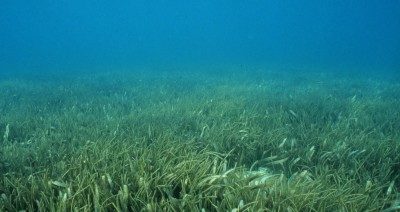By Valerie Perini
As ocean temperatures rise due to climate change, marine organisms have two options: adapt to warmer conditions or relocate to cooler, higher latitude waters. As ecosystems lose and gain inhabitants the impacts can be widespread, and these changes are the topic of a new study co-authored by MSC graduate student Christopher Baillie, which documents and predicts the current and future consequences of such range shifts in northern Gulf of Mexico (GOM) seagrass communities.
In the study, recently published in the journal Marine Ecology Progress Series, Baillie and colleagues examine the impacts of tropical migrants into the temperate seagrass community of the northern GOM. These invaders include several species of herbivores such as parrotfish and filefish, and due to their intense appetite for submerged aquatic vegetation, these characteristically tropical species have the potential to substantially reduce the biomass of ecologically important seagrasses in the northern GOM.
The authors used a combination of observational and experimental techniques to provide detailed estimates of both current seagrass consumption by these species and well as potential changes to northern GOM seagrass beds if abundances continue to increase. Given that seagrass meadows are regarded as important nursery habitats that support diverse assemblages of juvenile fishes and crustaceans, reductions in seagrass biomass have the potential to impact the survival of many other finfish and shellfish species which rely on them.
The predictions and estimates generated in the study provide valuable information that will help to inform conservation and management efforts of this highly productive habitat.

